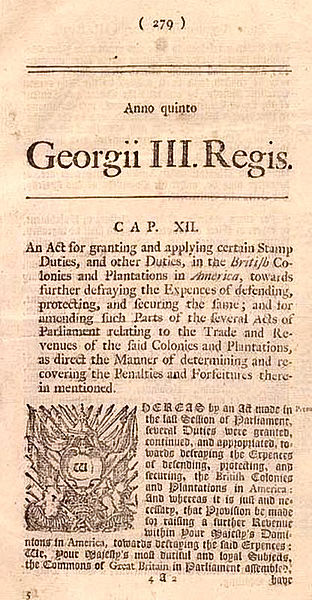Virtual representation was the idea that the members of Parliament, including the Lords and the Crown-in-Parliament, reserved the right to speak for the interests of all British subjects, rather than for the interests of only the district that elected them or for the regions in which they held peerages and spiritual sway. Virtual representation was the British response to the First Continental Congress in the American colonies. The Second Continental Congress asked for representation in Parliament in the Suffolk Resolves, also known as the first Olive Branch Petition. Parliament claimed that their members had the well being of the colonists in mind. The Colonies rejected this premise.
Virtual Representative (standing, clad in brown) gives the Government (with blunderbuss) permission to rob a colonist. Catholic Quebec enjoys peace, Protestant Boston burns, and blinded Britannia approaches a pit. 1775 cartoon
The American Revolution was a rebellion and political movement in the Thirteen Colonies which peaked when colonists initiated an ultimately successful war for independence against the Kingdom of Great Britain. Leaders of the American Revolution were colonial separatist leaders who originally sought more autonomy within the British political system as British subjects, but later assembled to support the Revolutionary War, which successfully ended British colonial rule over the colonies, establishing their independence, and leading to the creation of the United States of America.
The Committee of Five presenting its draft of the Declaration of Independence to the Second Continental Congress in Philadelphia on June 28, 1776, depicted in John Trumbull's 1818 portrait, Declaration of Independence
Notice of the Stamp Act 1765 in a colonial newspaper
Letter III of John Dickinson's Letters from a Farmer in Pennsylvania, published in the Pennsylvania Chronicle, December 1767
On June 9, 1772, the Sons of Liberty burned HMS Gaspee, a British customs schooner in Narragansett Bay.





